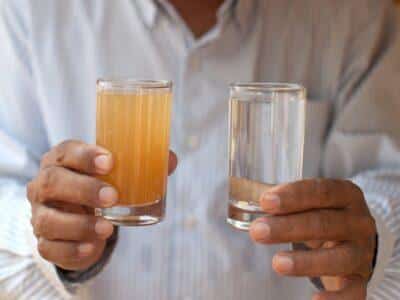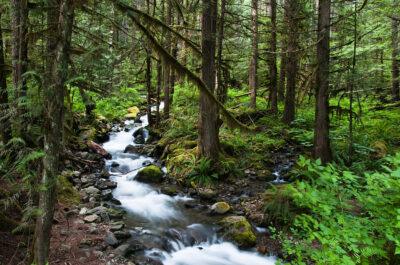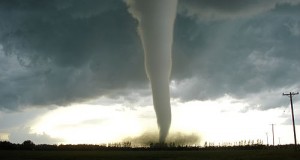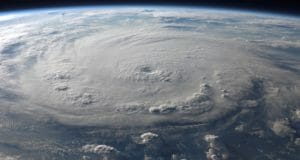On a fundamental, biological level, water is the most critical, ingestible resource for survival of most any organism, including humans.
The average person engaged in average activity in a temperate climate can live for three days without water. No exceptions. It’s also a fact that the average person requires at least a half-gallon of water a day to maintain functional health. This can vary depending on age, weight and activity but stands as a viable average. Any less begins to compromise certain biological systems.
But it’s not just about water as a liquid for life. It’s about water as an ingredient in cooking, bathing and personal hygiene – not to mention a needed sustenance for animals, from dogs and horses to chickens, pigs and other livestock. Plants also require water but we generally hope that natural water resources such as rain or irrigation will suffice.
This article focuses largely on scalability. It’s not about constructing a solar still to squeeze a pint or two of water out of the ground on a daily basis. It about collecting water from both existing and found sources and effectively purifying it.
Water Collection
Perhaps the most reliable source of fresh water is natural precipitation. In most parts of the world, rain and snow are consistent and predictable. Your ability to capture and store natural precipitation should be a fundamental part of your water strategy. The most common method involves the use of rain barrels connected to downspouts and gutters on the roof of a structure. You could also create water capture areas using tarpaulins to catch, collect and direct precipitation when rain looks eminent.
The Secret To Starting Fires In Even The Most Extreme Conditions
Snow is essentially harvested with a clean shovel and a bucket and then placed into either an environment above freezing, or over a heat source. The good news is that freezing temperatures inhibit bacterial growth. The bad news is that melting snow or ice takes time and is usually done in small quantities.
Bodies of Water
Another source of water is provided by lakes, rivers, creeks and springs. Unlike precipitation which is relatively pure when first collected, these water sources will often require varying levels of filtration and purification. A possible exception is a cold water spring, but even then a certain level of filtering and purification is wise. The unique value of any water source that has a current such as a river, creek or spring is your ability to use a “ram” pump to collect and pump water to a collection point. This requires you to be in relatively close proximity to the water resource, but we often choose locations for a homestead based on this dynamic.
Wells also serve as a reliable water source, assuming you have a system in place to pump the water to the surface. This could include a hand-pump, a windmill-powered pump or an electric pump. The challenge with any electric pump in an off-the-grid environment is electricity, but solar power and windmill power is an option. Be careful with any assumptions about your ability to generate and store enough electricity to power a well pump. Many well pumps have a very high initial draw on power up to 1,000 watts or more, and if you can’t generate or store that amount of wattage, the well pump will never engage. There are lower wattage well pumps designed for solar and/or DC applications that could simplify this situation.
You could also use a narrow well bucket in a well that has a standpipe above ground. If the power is out, you could remove the bolts at the top of the standpipe and lower the well bucket on a rope to the water level. It will fill with water and when you exert pressure to lift the rope it automatically closes a baffle to prevent the water from running out. Each refill will give you about two gallons of water.
Filtering and Purifying Water
Water is the stuff of live, and life not only survives and thrives on water, but in water as well. This includes bacteria and protozoa that can cause a variety of afflictions, from dysentery to cholera. We often assume this problem to be at its worst in still or stagnant ponds, but rain barrels can be just as polluted and a current in a river or creek is no guarantee that water will be any safer or pure.
You also need to consider the possibility of toxic contamination. These are chemicals and heavy metals that are finding their way into our water supply at an alarming rate. The unfortunate fact is that it’s challenging to identify, filter or neutralize toxic chemicals in water. That’s why you should consider the source. Rivers in particular are known to carry and deliver toxic chemicals due to their length and their potential exposure to chemical runoff from farms, factories and other sources that they meander through. It’s difficult to test for toxic chemicals easily, so you may have to use good judgment. Typically, river water drawn closer to the source will have less potential for toxic contamination. It’s also true that natural precipitation like rain may have less toxic contamination, but acid rain continues to be an occasional fact of life.
There’s also a problem with particulate matter in water from soil to debris like bits of leaves, algae, twigs and other solids that affect the appearance and the taste of water. As a result, you’ll need effective ways to filter and purify water.
Types of Water Filters
There are essentially two types of water filters. The “membrane” filter and the “depth” filter.
Membrane filters have a thin membrane with precisely sized, microscopic pores that prevent objects larger than the pore size to pass through. The idea is that microbes and bacteria will not pass through membrane layers. Typically, the size of the pores decreases from one layer to the next. They are relatively easy to use, but are typically small-scale in size. The disadvantage is that they are slow and can only filter small volumes of water at a time. But they work great when you need clean drinking water.
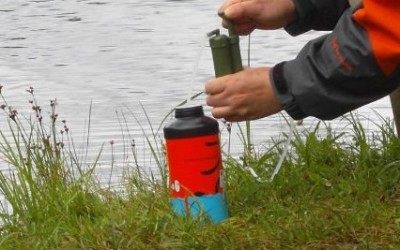 Depth filters use thick, porous layers of varying materials to trap particles from large to microscopic, with final filters often made from carbon or ceramic. They can be easily cleaned by backwashing with pure water, or in the case of a homemade depth filter, the filter media can be replaced.
Depth filters use thick, porous layers of varying materials to trap particles from large to microscopic, with final filters often made from carbon or ceramic. They can be easily cleaned by backwashing with pure water, or in the case of a homemade depth filter, the filter media can be replaced.
Water filters literally can be used to drink water straight from a pond, lake or river – and you’ll instantly see the difference in quality.
Ideally, you should own several filters, and place them in your home and car and also in your survival kit. But if you find yourself somewhere without your filter, you can make a crude one.
Collect clean gravel, clean sand, charcoal, long green-grasses, and a piece of fabric. The best way to find clean gravel and sand is to scoop the top layer that has been exposed to the sun and either toss it up to let the wind and separate the dust or rinse it in your dirty water. You have to purify your filtered water anyway. You can get your charcoal from the bed of a fire, and you want to find some way to rinse or blow off the charcoal dust the same way.
New Lantern Provides 100,000 Hours of Emergency Backup Lighting With No Open Flames
A two-liter plastic bottle is shown as an example, but you can use an empty, plastic milk bottle or other plastic bottle as long as it can hold a good amount of your filter media and water. First, you have to cut off the bottom or the base of the plastic bottle. Eventually you’re going to carefully pour your various filter media into the bottle in layers.
Layering in the Media
You want the size and porosity of your media to decrease as the water filters down, but you also have to filter the media, such as sand. Sand in water is crunchy on the teeth the same was as sand in a sandwich at the beach. Follow these steps:
- To start the layering, tie the fabric around the spout of the bottle. This will be the final filter before the water drips into a container or pot.
- Next, crumple up and fold over a large piece of fabric as your first layer at the bottom.
- Top the fabric with a 1-inch layer of crisscrossed, green grass.
- Top the grass with a layer of charcoal about one-inch thick.
- Top the charcoal layer with a layer of sand about two-inches thick.
- Top the sand with a layer of gravel about one-inch thick.
You’re trying to use various layers of material or media of various sizes to filter out any rotted vegetable matter and particulate matter. As the dirty water percolates towards the bottom, particles of smaller and smaller sizes are filtered. The charcoal will help remove any odors present in the water.
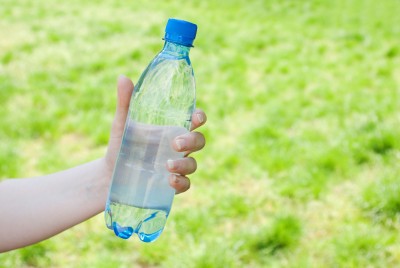 There are substitutes for the filter media you can consider, as well. If you happen to be in a location without grasses, you can use green leaves or pine needles in a layer. You can also substitute sand with more gravel. The charcoal is also optional but it sure helps to get rid of any strange flavors, especially in tannic water stained by rotting, brown leaves and bark. The fabric is fairly critical for smaller particles. If you have to substitute and the water is still off-color you can always let it sit after boiling or chemically treating it, and allow the particles to settle to the bottom. Just be careful to skim the water off the top of the pot so you don’t stir up the stuff at the bottom. Again, making your own water filtration device in the wilderness isn’t ideal, but it could save your life if you left your filter at home.
There are substitutes for the filter media you can consider, as well. If you happen to be in a location without grasses, you can use green leaves or pine needles in a layer. You can also substitute sand with more gravel. The charcoal is also optional but it sure helps to get rid of any strange flavors, especially in tannic water stained by rotting, brown leaves and bark. The fabric is fairly critical for smaller particles. If you have to substitute and the water is still off-color you can always let it sit after boiling or chemically treating it, and allow the particles to settle to the bottom. Just be careful to skim the water off the top of the pot so you don’t stir up the stuff at the bottom. Again, making your own water filtration device in the wilderness isn’t ideal, but it could save your life if you left your filter at home.
Many filters require or recommend the addition of a purification step as well, whether they are manufactured or improvised. Sometimes this purification is done chemically and at other times physically through boiling.
Purification is designed to kill smaller microbes that may pass through a filter and maintain a threat to the purity of the water for drinking and cooking. Don’t assume that any cooking will automatically kill all bacteria. To safely purify water with boiling, the boil should be maintained for at least one minute at a robust, rolling boil.
Chemical Purification
Chemical purification methods include tablets such as Halizone, or liquids such as iodine or chlorine. In fact, Halizone is a chlorine derivative. It’s critical to make sure you use the proper amount of any chemical depending on the volume of water you are trying to purify. As a general rule, you could safely add five drops of chlorine to a quart of water to kill all resident bacteria. But there’s more to it then just adding a few drops of anything. According to Princeton University:
- “The effectiveness of all chemical treatment of water is related to the temperature, pH level, and clarity of the water. Cloudy water often requires higher concentrations of chemical to disinfect.
- “If the water is cloudy or filled with large particles, strain it, using a cloth, before treatment. Large particles, if swallowed, may be purified only ‘on the outside.’
- “Add the chemical to the water and swish it around to aid in dissolving. Splash some of the water with the chemical onto the lid and the threads of the water bottle so that all water areas are treated.
- “The water should sit for at least 30 minutes after adding the chemical to allow purification to occur. If using tablets let the water sit for 30 minutes after the tablet has dissolved.
- “The colder the water, the less effective the chemical is as a purifying agent. Research has shown that at 50 F (10 C), only 90 percent of Giardia cysts were inactivated after 30 minutes of exposure. If the water temperature is below 40 F (4 C), double the treatment time before drinking. It is best if water is at least 60 F (16 C) before treating. You can place the water in the sun to warm it before treating.
- “Chemically treated water can be made to taste better by pouring it back and forth between containers, after it has been adequately treated. Other methods include adding a pinch of salt per quart or adding flavorings (e.g., lemonade mix, etc.) after the chemical treatment period.”
Boiling Water
Water purification through boiling may be the safest way to purify water given all of the variables affecting chemical purification. Boiling also leaves no aftertaste, which both iodine and chlorine create. The good news is that you don’t have to boil all of your water. Any water used for watering plants, sanitation such as filling a toilet tank for flushing, and the use of rainwater to water livestock are all reasonably safe. In fact, an old homestead practice was to use rain water from a downspout during a rainstorm for a fresh, summer shower. Just make sure you get your hair rinsed before the rain stops.
How do you filter your water at home and in the woods? Share your tips in the section below:
Filtering Is Essential: The World May Be Running Out Of Drinkable Water. Read More Here.
 Off The Grid News Better Ideas For Off The Grid Living
Off The Grid News Better Ideas For Off The Grid Living

